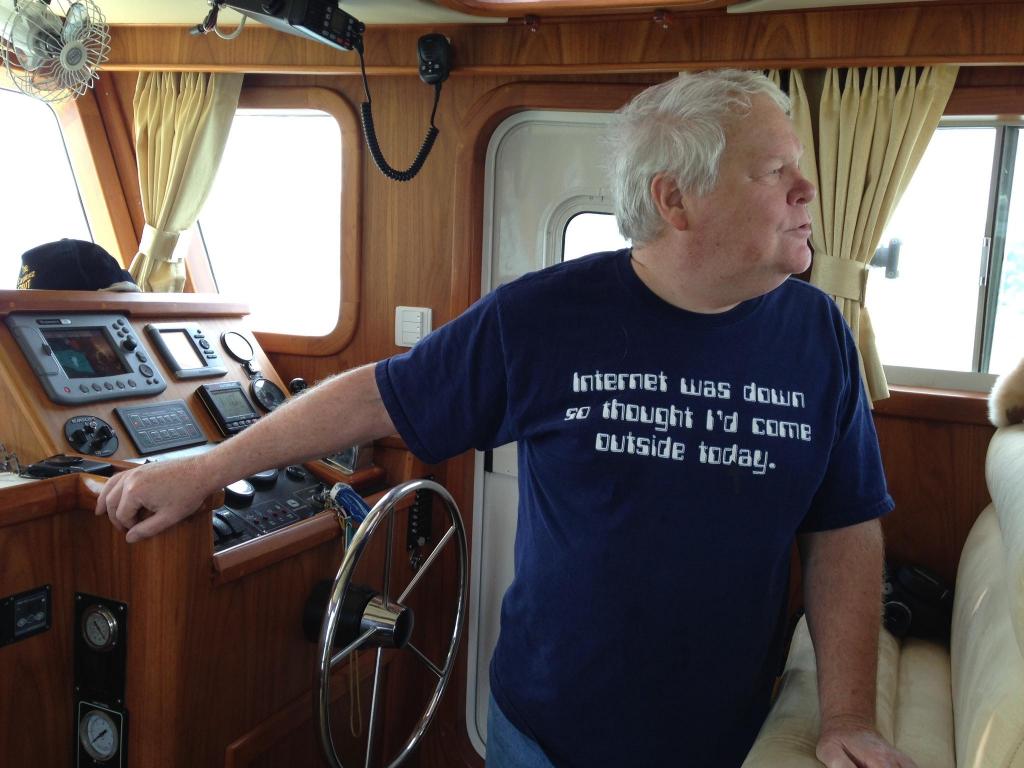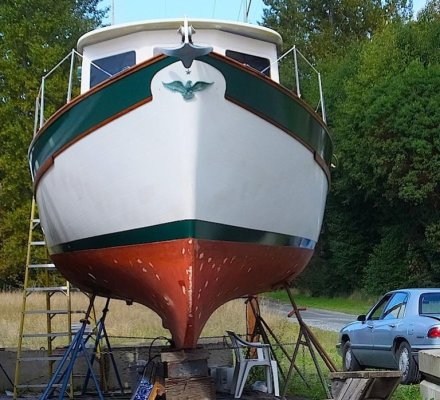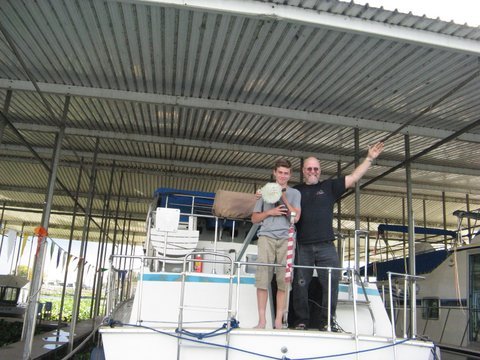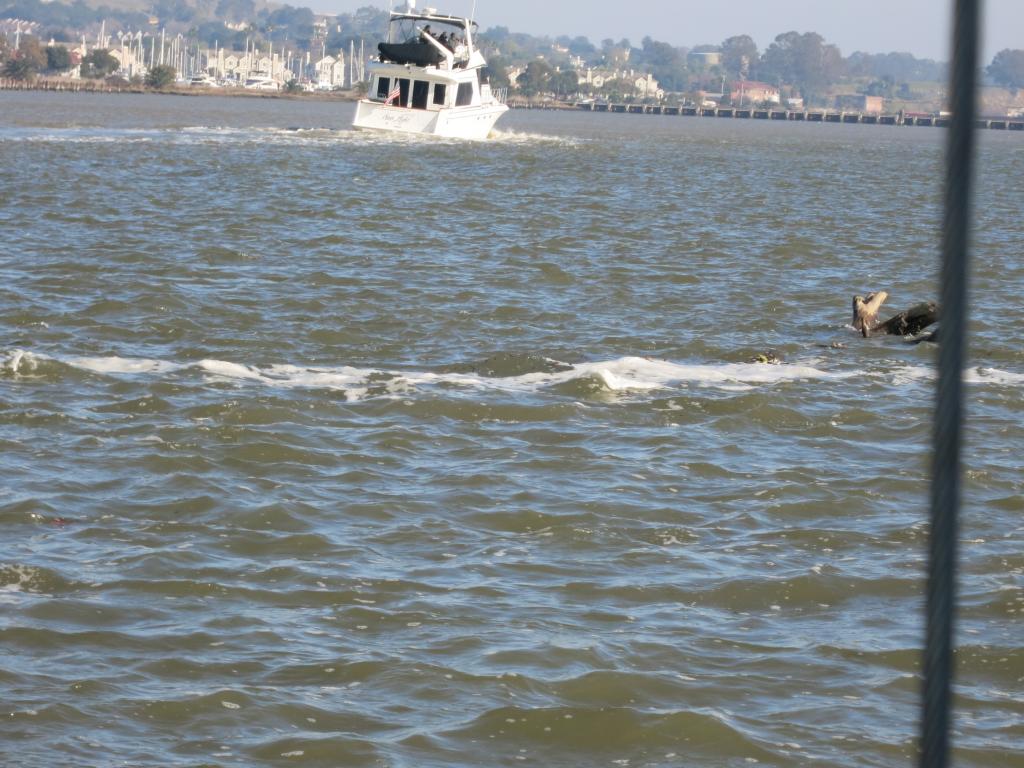I was going to drop it as I figured I'd stated my position and others have re theirs. But there's more to be said and so little time. Going on a road trip Wed very AM for Edmonton Alberta so my input will be spotty but probably better than all these fast balls.
Peter B. wrote;
"I kinda like the fact that my Lehman 120hp is, by Eric's standards, over -powered,"
Actually that's not so Peter. The 36GB is under powered IMO but it's considerably bigger, wider and heavier than your 34CHB. Also I think the CHB hull is a tad bit more of a FD hull than the GB. So the 120FL seems to be plenty for the 34CHB and because of the over heating problem ect most won't run an FL very hard so in reality you don't really have 120hp. An 80 Cummins or old Perkins should do fine and that's about as much power as you have available. So no your CHB is not over or under powered IMO.
N4712 wrote;
"I too also like the reserve HP for those few times you need it"
Edelweiss wrote;
"We were crossing the straits of Georgia NewCastle Island to Welcome Passage in BC, running with a 42' single engine TT who only made about 6 knots.
Normally I wouldn't care about running slow, but the weather came up and we were getting our behinds kicked wallowing around in the slop with 20 miles of ugly highway ahead of us and three kids who were turning green.

We started the second engine, wished the other skipper well, kicked it up to 11 knots and made the crossing in half the time.
Very thankful to have the extra speed on occasions like that!!"
That post brought about some new views of mine on the FD/SD differences.
I remember the "slicer/puncher" bit Mark brought to the forum some time ago. I think Mark knew more about what he was talking about than all of us did including Mark.
For years I've said I never needed more power when it got rough but over and over again many here said they did. I of course decided it was "all in their heads" and couldn't understand it. Cuz I certianly didn't need more power. I always reduce rpm in head seas and seem to make good headway for a 6 knot boat.
I suspect that my Willard is a slicer. I proclaimed it was a "puncher" because I thought her wake at speed wasn't really small. Now I think it is (a slicer (relatively so)) and that may be the reason Willy dosn't need more power in the nasty. Most trawlers have a much more blunt bow than Willy (as in PC) and I feel experience much more deceleration dealing w large head seas. And when the bow goes up the stern goes down and the stern (of a SD hull more like a planing hull) creates more drag than running level. This slows the boat down and most likely enough to require more than cruise power. Look at my pics of Willy's forefoot and perhaps it will appear to be a hull that can slice through waves w little inclination to be impeeded by them.
Edelweiss perhaps if you had a good FD hull you wouldn't have felt the need to go faster. If you had bigger rudders and a stern that didn't tend to yaw the boat around a lot and having kids turning green you may have been fine w buddy boating w the 42.
Marin wrote;
"Absolutely. If the boat won't sell, then it's a bad design. It's that simple."
I can't believe you (one of the smartest guys here) said that.
It's clear that if you were working for a boat builder you'd be better off on the marketing dept than in design and engineering. The latter seems to have escaped you.
Craig wrote;
"No you're just looking for an argument Eric."
No .. and I'm a bit offended by that. I'm just trying to express my opinions so people understand what I'm saying and not to have so many tomatoes fly'in by. Just trying to make my point. That is that speed is fine and mismatched hulls and engines (power) are not.
"Apples and oranges Eric, comparing a Grand Banks and a Willard hull is akin to comparing a Camry to a T-100 pickup."
Most of our boats are better looking than a Toyota PU. There I just compared them. An aircraft Carrier is in some important ways comparable to a row boat. Both FD hulls subject to the dynamics of hydraulic forces of physics to achieve the speed they do. ect ect.
Marin your post #25 is off topic.
Art I'm not telling anybody what boats they should have. I am, however pointing out that some boats are flawed re the powering issues. On The Rocks ... the OP wanted to know.
OTR you're right the smaller engines should be more efficient. Look for very close to 4 to 5 hp per ton of displacement while cruising. Just my opinion though.
Soldier on Mark and thanks for the "slicer/puncher" outlook.










